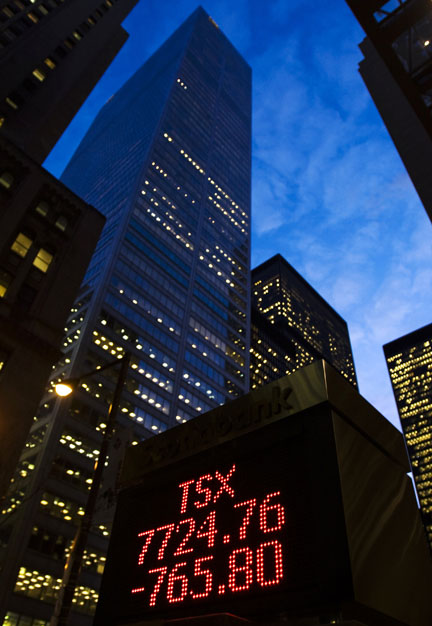Transparency will trump dark orders in the future as Canadian regulators push forward with a new framework to handle dark pools of trade orders from institutions.

The Canadian Securities Administrators and the Investment Industry Regulatory Organization of Canada have announced they are implementing a new regulatory framework for the use of orders entered without pre-trade transparency, known as dark orders.
To implement the framework, amendments have been made to National Instrument 21-101 Marketplace Operation and to the Universal Market Integrity Rules, approved by the CSA on March 30. The rules will be effective Oct. 10, 2012.
The framework involves the following key messages:
- visible order priority: visible orders will have execution priority over dark orders on the same marketplace at the same price;
- meaningful price improvement: in order to trade with a dark order, smaller orders must receive a minimum level of price improvement, which is defined as one trading increment or half a trading increment for securities with a bid-ask spread of one trading increment; and
- minimum size: IIROC has the ability to designate a minimum size for dark orders. It is not doing so at this time, but the CSA and IIROC will monitor market developments to consider whether it should implement a minimum size.
The UMIR provisions will introduce a new regulatory approach to safeguard the price discovery process in Canadian equity markets and recognizes the increasing use of dark liquidity and balances displayed and dark liquidity for healthy price discovery, said Susan Wolburgh Jenah, IIROC president and chief executive officer in a statement.
“These proposals are intended to ensure Canadian equity markets continue to evolve in a fair and competitive manner that strengthens market integrity and investor protection.”
The initiative follows consultations with industry and stakeholders that began in 2009. The rules are designed to enable institutional traders to continue to execute large orders with minimal market impact, while ensuring investors with smaller orders receive meaningful price improvement when they trade with dark orders.
“We never had dark orders for the longest time but institutions sometimes had trouble executing their large orders because they figured everyone was always talking about them,” says Simon Romano, of Stikeman Elliott LLP, who suggests the new rules are probably a good thing for retail but not for institutions.
“When the big guys would tell their broker they want to sell one million shares and then they would go looking for buyers it leaks out and the market goes down because there is greater supply. So the theory of dark orders was to let it interact quietly and not show the big volume orders that could be price raising or lowering. In concept it’s a little troubling all of this happens in the dark,” says Romano.
The new framework allows for regulation of minimum sizes of large orders in the future.
“If they think it’s starting to impact the retail market it means they can put a threshold on it and it gives them a regulatory tool they didn’t have before,” says Romano.
Over time the framework is probably intended to discourage a greater move toward dark orders.
“With the threat of being able to regulate it and put a minimum size on it means people shouldn’t develop their whole structures to move baby orders to the dark side,” he adds.
The new rules allow exemptions for trades that have a value of more than $100,000. But for smaller trades, the new framework only allows dark trades in cases where one of the party finds a meaningfully better price than “light” trades available on the open market.
The rules will require light orders take priority over dark orders at the same marketplace, at the same price.
“To me it’s not interesting as a policy matter, it’s these rules about when retail orders get in the door and forcing big orders to interact with retail orders — in some ways it’s a very socialist system,” says Romano.
“If you have an order out there for 100 orders of one of the big banks and all these big guys are trading around you and they want to do a $100,000 order and they don’t want their order broken up but the law says your order gets to break it up because your price is a little better. It’s kind of sharing the wealth with the little people.”
Combined, dark liquidity makes up about five per cent of the total equity trading market share in Canada. Dark trading in Canada reached US$12.99 billion in March, the highest total ever recorded and over double the amount recorded in the same period last year, according to figures from Thomson Reuters.

 The Canadian Securities Administrators and the Investment Industry Regulatory Organization of Canada have announced they are implementing a new regulatory framework for the use of orders entered without pre-trade transparency, known as dark orders.
The Canadian Securities Administrators and the Investment Industry Regulatory Organization of Canada have announced they are implementing a new regulatory framework for the use of orders entered without pre-trade transparency, known as dark orders.